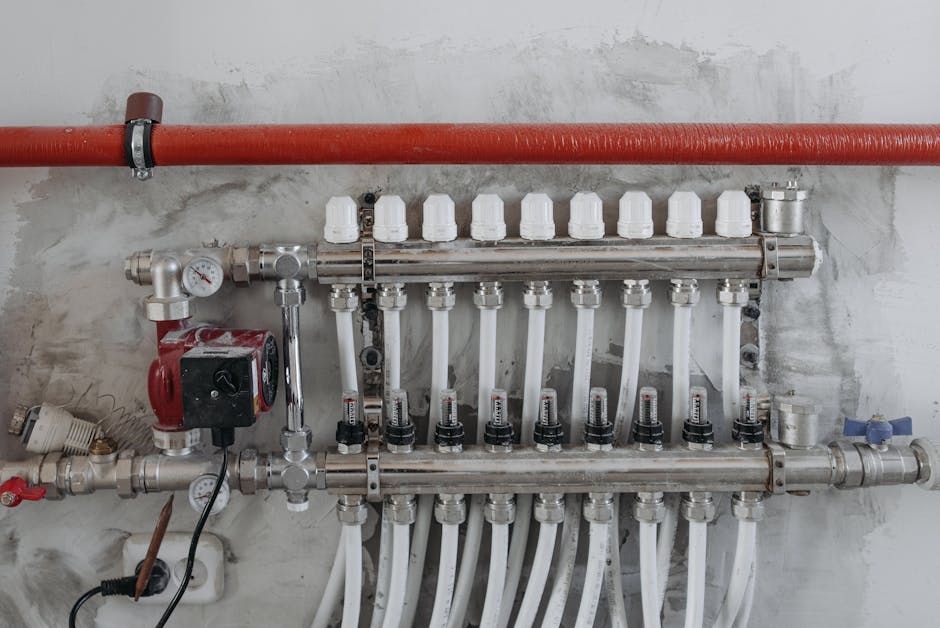Starting Strong with Plumbing SEO
Plumbing search engine optimization (SEO) is essential for any plumbing business looking to attract more customers from local search results. It increases your online visibility, bringing more clients right to your door when they need your services the most.
If you’re a small business owner struggling with low online visibility and want a quick fix, here’s what you need to focus on:
- Optimize your website with relevant keywords like “plumber near me.”
- Claim and optimize your Google Business Profile.
- Encourage and manage customer reviews.
Improving your plumbing SEO can make a significant difference by:
- Driving More Traffic: Improved rankings mean more visibility and more visitors to your site.
- Building Trust: High rankings and positive online reviews build your credibility.
- Increasing Revenue: More traffic and trust equal more customers and higher earnings.
What is Plumbing Search Engine Optimization?
Plumbing Search Engine Optimization (SEO) is the process of improving your plumbing website’s visibility on search engines like Google. When potential customers search for plumbing services, effective SEO ensures your site appears at the top of search results.
On-Page SEO
On-page SEO involves optimizing individual web pages to rank higher and earn more relevant traffic. This includes:
- Keywords: Integrate relevant keywords naturally throughout your content, including headings, texts, and URLs. For example, use terms like “emergency plumber in [city]” to attract local searches.
- Metadata: Optimize title tags and meta descriptions. For instance, a title like “24/7 Emergency Plumbing Services in [City]” can attract clicks.
- URLs: Use descriptive URLs such as “plumbing-services-[city].”
- Headings: Structure your content with clear headings and subheadings to improve readability.
- Content Quality: Provide detailed, useful information that answers common customer questions. Fresh, evergreen content is favored by search engines.
Off-Page SEO
Off-page SEO focuses on actions taken outside your website to impact your rankings. Key components include:
- Backlinks: Acquire links from reputable websites. For example, a link from a local business directory can boost your site’s authority.
- Reviews: Encourage satisfied customers to leave positive reviews on platforms like Google and Yelp.
- Citations: Ensure your business information is consistent across all online directories.
- Social Signals: Engage with your audience on social media to build brand awareness and trust.
Local SEO
Local SEO is crucial for plumbing businesses targeting nearby customers. Focus on:
- Google Business Profile: Claim and optimize your profile. Include all relevant details like address, phone number, and operating hours. Add photos and respond to reviews.
- Local Keywords: Use keywords that include your location, like “best plumber in [city].”
- Local Citations: Ensure your business is listed in local directories and that your information is consistent across all platforms.
By focusing on these aspects of plumbing search engine optimization, you can improve your online visibility, attract more local customers, and grow your plumbing business. Next, we’ll dive into how to optimize your plumbing website for better performance.
Key Components of Plumbing SEO
In this section, we’ll break down the crucial elements of plumbing search engine optimization (SEO). Mastering both on-page and off-page SEO, along with local SEO, will help you dominate search results and attract more customers.
On-Page SEO
On-page SEO focuses on optimizing elements within your website to improve search rankings.
Keywords
Keywords are the bedrock of SEO. Use relevant plumbing-related keywords naturally throughout your site. For example, terms like “emergency plumber” or “pipe repair.”
- Long-tail keywords: These are specific phrases like “24-hour emergency plumber in [city].” They often have lower competition and higher conversion rates.
Metadata
Metadata includes title tags and meta descriptions. These should be concise, relevant, and contain your primary keywords.
- Title Tags: Keep them under 60 characters. Example: “Plumbing Services | [Business Name]”
- Meta Descriptions: Aim for 155 characters. Example: “Reliable plumbing services in [city]. Call us 24/7 for emergency repairs.”
URLs
Create descriptive and simple URLs. Use keywords and avoid long strings of numbers or irrelevant text.
- Example: www.yourplumbingservice.com/drain-cleaning-cityname
Headings
Use headings (H1, H2, H3) to structure your content. Include keywords to help search engines understand your content’s hierarchy and relevance.
- Example:
markdown
# Emergency Plumbing Services
## 24-Hour Plumber
### Fast and Reliable Service
Content Quality
High-quality content is key. Provide detailed, useful information that answers customer questions. Include images and videos to increase engagement.
- Regular Updates: Keep content fresh and evergreen. Update old posts to maintain relevance.
Off-Page SEO
Off-page SEO involves actions taken outside your website to improve search rankings.
Backlinks
Backlinks from reputable sites act as votes of confidence. Aim to get links from industry-related sites, local business directories, and reputable blogs.
- Case Study: A local plumber partnered with a home improvement blog to write guest posts, earning valuable backlinks and increasing site authority.
Reviews
Online reviews build trust and influence search rankings. Encourage satisfied customers to leave positive reviews on Google, Yelp, and other platforms.
- Respond to Reviews: Address both positive and negative reviews to show you value customer feedback.
Citations
Citations are online mentions of your business name, address, and phone number (NAP). Ensure your NAP is consistent across all platforms.
- Tools: Use tools like Whitespark to find citation opportunities.
Social Signals
A strong social media presence can boost your SEO. Share local content, engage with followers, and include your NAP info in your bios.
Local SEO
Local SEO is about optimizing your online presence to attract more business from relevant local searches.
Google Business Profile
Optimize your Google Business Profile (formerly Google My Business). Include complete information, photos, and respond to reviews.
- Pro Tip: Use posts to share updates and interact with potential customers.
Local Citations
List your business in local directories like Yelp, Yellow Pages, and the Better Business Bureau. Consistent NAP information across all citations is crucial.
- Example: A plumber in Houston ensured all citations listed “Plumbing Houston, TX” to maintain consistency and improve local search rankings.
Local Keywords
Use keywords that include your location, like “best plumber in [city]” or “plumbing repair in [city].” This helps attract customers searching for services in your area.
By mastering these key components of plumbing search engine optimization, you can significantly enhance your online presence and attract more local customers. Next, we’ll dive into how to optimize your plumbing website for better performance.
Optimizing Your Plumbing Website
Website Structure
A well-structured website is the backbone of effective plumbing search engine optimization. Think of it as the blueprint for your site, guiding both users and search engines to relevant content.
Site Architecture:
Your website should have a simple, logical structure. This means organizing your pages in a clear hierarchy. For example, start with main categories like “Services” and “About Us,” then break them down into subcategories such as “Emergency Plumbing” or “Water Heater Repair.”
Internal Linking:
Internal links connect different pages within your site. This helps search engines crawl your website more efficiently and improves user navigation. For instance, link your blog posts to related service pages to keep visitors engaged longer.
Navigation:
Your navigation menu should be intuitive. Include primary navigation at the top and a footer menu for easy access. Descriptive labels like “Our Services” or “Contact Us” make it easy for users to find what they need.
Website Speed
A fast-loading website is crucial for both user experience and SEO. Slow sites lead to high bounce rates, driving potential customers away.
Load Times:
Use tools like Google PageSpeed Insights to test your site’s speed. Aim for load times under three seconds.
Image Compression:
Large images can slow down your site. Compress images using tools like TinyPNG or ImageOptim to reduce file sizes without sacrificing quality.
Caching:
Enable browser caching to store static files locally on users’ devices. This speeds up load times for returning visitors. Tools like WP Super Cache can help if you’re using WordPress.
Mobile-Friendliness
With more people using smartphones to search for services, mobile optimization is non-negotiable.
Responsive Design:
Your website should automatically adjust to fit any screen size. Use a responsive design framework like Bootstrap to ensure compatibility across devices.
Mobile Optimization:
Simplify your mobile site by reducing clicks and leveraging scrolling. Avoid using large videos and limit the amount of JavaScript to keep load times fast.
User Experience:
Make sure your mobile site is user-friendly. Insert click-to-call buttons and keep forms short and easy to fill out. This improves user interaction and increases the chances of conversions.
By focusing on these aspects, you’ll create a plumbing website that not only ranks well but also provides an excellent user experience. Next, let’s explore how to create high-quality content that attracts and retains customers.
Creating High-Quality Content
High-quality content is the backbone of successful plumbing search engine optimization. It helps attract, engage, and convert visitors into customers. Let’s dive into the key elements of content marketing, keyword research, and content updates.
Content Marketing
Blog Posts
Blog posts are a great way to answer common plumbing questions and provide valuable tips. For example, a post titled “How to Fix a Leaky Faucet in 5 Easy Steps” can attract DIY enthusiasts and establish your expertise.
Service Pages
Each of your services deserves its own page. This helps search engines understand what you offer and makes it easier for potential customers to find you. For instance, create separate pages for “Drain Cleaning,” “Water Heater Repair,” and “Emergency Plumbing Services.”
FAQs
An FAQ section addresses common customer questions and concerns. This not only improves user experience but also boosts your SEO by incorporating natural language queries.
Infographics
Visual content like infographics can simplify complex plumbing topics. For example, an infographic on “How a Septic System Works” can be highly shareable and informative.
Keyword Research
Buyer Intent
Understanding what your potential customers are searching for is crucial. Keywords like “emergency plumber near me” indicate high buyer intent and should be prioritized.
LSI Keywords
Latent Semantic Indexing (LSI) keywords are related terms that help search engines understand the context of your content. For example, if your primary keyword is “plumbing repair,” LSI keywords might include “pipe leak” and “drain unclogging.”
Long-Tail Keywords
Long-tail keywords are longer, more specific phrases that often have lower competition. Phrases like “how to increase water pressure in shower” can attract targeted traffic.
Content Updates
Fresh Content
Regularly updating your blog with fresh content keeps your site relevant. Google favors sites that are frequently updated, so aim to publish new posts at least once a month.
Evergreen Content
Evergreen content remains relevant over time. Posts like “Common Plumbing Problems and How to Fix Them” can continually attract traffic and require minimal updates.
Regular Updates
Keep your existing content up-to-date. For example, if you have a post about “Top Plumbing Tools for 2020,” update it to reflect the latest tools and trends for 2023.
By mastering these elements, you’ll create high-quality content that not only ranks well but also engages and converts your audience. Next, we’ll look at how to build local citations and reviews to further boost your SEO efforts.
Building Local Citations and Reviews
Google Business Profile Optimization
Your Google Business Profile (GBP) is crucial for plumbing search engine optimization. A complete and optimized profile can significantly improve your local search rankings.
Complete Profile: Fill out every section of your GBP. Include your business name, address, phone number (NAP), website, and business hours. Consistency is key here. Make sure your NAP information matches exactly across all online platforms.
Photos: Upload high-quality photos of your business, staff, and completed projects. According to Google, businesses with photos receive 42% more requests for directions and 35% more click-throughs to their websites.
FAQs: Use the Q&A feature to address common questions about your services. This not only helps potential customers but also boosts your profile’s relevance.
Posts: Regularly update your GBP with posts about promotions, events, or new services. This keeps your audience engaged and signals to Google that your business is active.
Online Listings
Claiming and optimizing your business on various online directories and review sites is another critical step.
Directories: List your business on popular directories like Yelp, YellowPages, and Angie’s List. This creates more local relevance signals for search engines.
Review Sites: Beyond Google, encourage reviews on other platforms like Facebook and Yelp. These reviews help build social proof and improve your local SEO.
Citation Sources: Ensure your business is listed on local listing aggregators and industry-specific directories. Consistent and accurate NAP data across these platforms builds trust with search engines.
Encouraging Customer Reviews
Positive reviews are essential for building trust and improving your local search rankings.
Positive Reviews: Ask satisfied customers to leave reviews on your Google Business Profile and other review sites. You can create a review link using Google’s Business Profile Manager and share it with happy customers.
Review Management: Monitor reviews regularly. Use software tools to automate some of the monitoring and managing processes. Respond to all reviews—thank customers for positive feedback and address any concerns raised in negative reviews.
Response Strategy: Engage with your reviewers. Responding to reviews shows potential customers that you care about their feedback. For negative reviews, offer solutions or an apology. This can turn a dissatisfied customer into a loyal one and shows others that you are committed to excellent service.
By optimizing your Google Business Profile, ensuring your business is listed on key directories, and actively managing customer reviews, you can significantly boost your local SEO efforts. Next, we’ll explore advanced SEO techniques for plumbers to take your strategy to the next level.
Advanced SEO Techniques for Plumbers
Voice Search Optimization
Voice search is changing the way people find local services, including plumbers. With the rise of smart home assistants like Siri, Alexa, and Google Assistant, optimizing for voice search is crucial.
Voice search keywords are often more conversational and longer than traditional search queries. For example, instead of typing “plumber near me,” someone might say, “Hey Google, find a plumber open now near me.” To capture these searches, include natural language and question-based keywords in your content.
Create FAQ pages that answer common voice search queries. For instance, questions like “How do I fix a leaky faucet?” or “What to do in a plumbing emergency?” can drive traffic to your site through voice search.
Schema Markup
Schema markup is a form of structured data that helps search engines understand your website content better. Implementing local business schema can improve your visibility in search results.
Rich snippets are enhanced search results that can include additional information like reviews, hours of operation, and contact details. These snippets can make your listing stand out.
Link-Worthy Assets
Creating link-worthy assets can help attract backlinks from other websites, signaling authority to search engines. Here are some types of content that can earn you valuable backlinks:
- Industry studies and original data: Conduct surveys or research specific to the plumbing industry and publish your findings.
- Tools and calculators: Offer online tools like a water usage calculator or a plumbing cost estimator.
- Guides and infographics: Create detailed guides on plumbing maintenance or infographics that simplify complex plumbing processes.
- Email newsletters: Share valuable tips and updates through newsletters that can be linked back to your website.
By focusing on voice search optimization, implementing schema markup, and creating link-worthy assets, you can enhance your plumbing search engine optimization strategy and stay ahead of the competition.
Next, we’ll discuss how to track and measure the success of your SEO efforts.
Tracking and Measuring SEO Success
Analytics Setup
To understand how well your plumbing SEO efforts are working, you need to set up analytics. Google Analytics is a powerful tool that provides insights into your website’s performance. Here’s how to get started:
- Create a Google Analytics account: If you don’t already have one, sign up for free.
- Install the tracking code: Add the provided tracking code to every page of your website.
- Set up goals: Track conversions like form submissions, phone calls, and appointment bookings.
- Configure Geo settings: Focus on local data to see how well you’re doing in your service area.
Key metrics to track include:
- Traffic sources: Know where your visitors are coming from (organic search, direct, social media, etc.).
- Top landing/exit pages: Identify which pages attract the most visitors and where they leave.
- Bounce rates: Understand how quickly visitors leave your site after arriving.
- Site speed: Monitor how fast your pages load.
- Location: See which areas your visitors are from.
Monthly Reporting
Regular reports help you understand your progress and make data-driven decisions. Here’s how to create effective monthly reports:
- Performance reports: Use tools like Google Analytics and Google Search Console to gather data on clicks, impressions, CTR, and average position for local-specific keywords.
- Keyword rankings: Track how well your site ranks for important keywords in your area using tools like Ahrefs’ Rank Tracker.
- Conversion tracking: Measure the success of local actions, such as form submissions, phone calls, or directions requests.
Your reports should highlight:
- Organic search traffic: Monitor the amount of organic traffic your website receives, especially from local search queries.
- Click-through rates (CTR): Measure the percentage of users who click on your link in the search results.
- Conversion rates: Track how many visitors take desired actions, like booking a service or calling your business.
Continuous Improvement
SEO is not a one-time task. It’s an ongoing process that requires regular monitoring and adjustments. Here’s how to keep improving:
- Track: Regularly check your analytics to see how your site is performing.
- Test: Experiment with different keywords, content, and strategies to see what works best.
- Tweak: Make changes based on your findings to optimize your site further.
- Ongoing strategy: Continuously refine your SEO strategy to adapt to changes in search engine algorithms and user behavior.
By setting up analytics, creating regular reports, and continuously improving your strategy, you can ensure your plumbing search engine optimization efforts are effective and driving growth for your business.
Next, we’ll dive into some frequently asked questions about plumbing SEO.
Frequently Asked Questions about Plumbing SEO
What is SEO for plumbers?
SEO, or Search Engine Optimization, for plumbers involves optimizing your online presence to rank higher in search engine results. This means when potential customers search for plumbing services, your business appears at the top. Plumbing search engine optimization focuses on both on-page and off-page strategies, including keyword optimization, local SEO, and technical SEO.
Importance:
– Visibility: With over 700,000 monthly searches for “plumbers near me,” appearing on the first page of Google can significantly increase your visibility.
– Credibility: Higher rankings build trust. People tend to click on top results, believing they are more reliable.
– Traffic: More visibility means more website traffic, leading to more leads and potential customers.
Benefits:
– Increased Leads: Quality traffic often translates into more inquiries and booked jobs.
– Competitive Edge: Outranking competitors can help you dominate your local market.
– Cost-Effective: Compared to traditional advertising, SEO offers a higher return on investment.
How long does SEO take for plumbing companies?
Timeline:
– 1-3 Months: You may start to see small improvements in visibility and traffic. Your Google Business Profile (GBP) listing might begin appearing in local searches.
– 3-6 Months: More noticeable changes, such as increased organic traffic and better rankings for local keywords, should occur.
– 6 Months and Beyond: Consistent lead generation and higher rankings for high-value keywords can be expected with sustained efforts.
Expectations:
– Patience: SEO is a long-term strategy. Quick fixes rarely yield lasting results.
– Consistency: Regular updates, content creation, and optimization are crucial.
– Adaptation: SEO is an ongoing process that requires adapting to changes in search engine algorithms and user behavior.
Should I hire a plumbing SEO company?
Benefits:
– Expertise: SEO companies have specialized knowledge and tools to optimize your site effectively.
– Time-Saving: Managing SEO can be time-consuming. Hiring experts allows you to focus on running your business.
– Better Results: Professionals can often achieve better and faster results due to their experience and resources.
Considerations:
– Quality: Ensure the company uses ethical (white-hat) SEO practices to avoid penalties.
– Transparency: Look for a company that provides clear reporting on the progress and results of their efforts.
– Cost: Weigh the cost of hiring an SEO company against the potential increase in leads and revenue.
By understanding the basics of plumbing SEO, the expected timeline, and the benefits of hiring a professional, you can make informed decisions to boost your online presence and grow your business.
Conclusion
In plumbing, standing out online is crucial. Plumbing search engine optimization (SEO) is your key to achieving this. By optimizing your website, creating high-quality content, and building a robust local presence, you can attract more customers and grow your business.
Long-Term Benefits
Investing in SEO brings long-term benefits. Here are a few to consider:
- Increased Visibility: Your plumbing services become more visible to potential customers searching online.
- Higher Quality Leads: SEO targets people actively looking for plumbing services, leading to more qualified leads.
- Cost-Effective Marketing: Unlike paid ads, the results of SEO efforts can last for years, providing ongoing returns.
- Enhanced Credibility: A high-ranking website builds trust and credibility with potential customers.
Why Choose D&D SEO Services?
At D&D SEO Services, we specialize in helping plumbing businesses thrive online. Our comprehensive approach includes on-page SEO, off-page SEO, and local SEO strategies tailored to your needs. We focus on delivering measurable results and ensuring your business stands out in a competitive market.
Ready to elevate your plumbing business with expert SEO strategies? Contact us today and let’s start driving more leads to your website!
By partnering with us, you can focus on what you do best—providing excellent plumbing services—while we handle your online visibility and growth.








